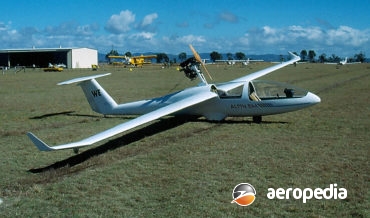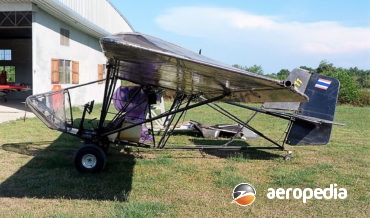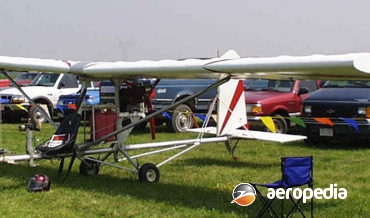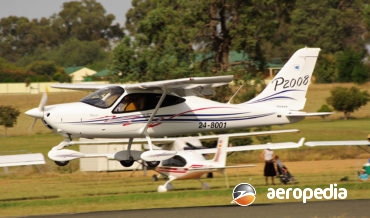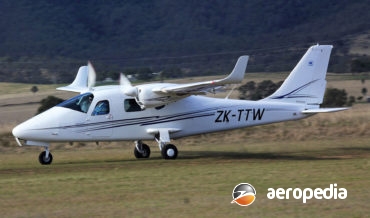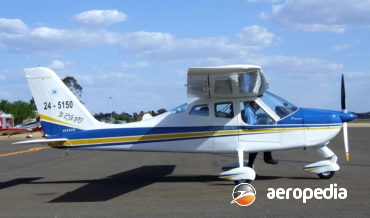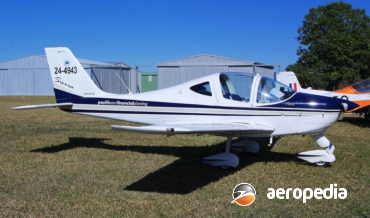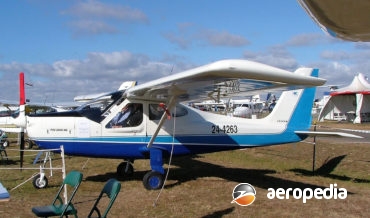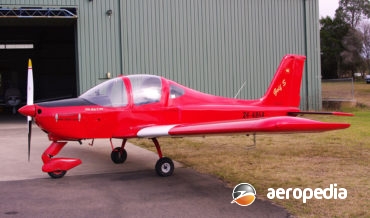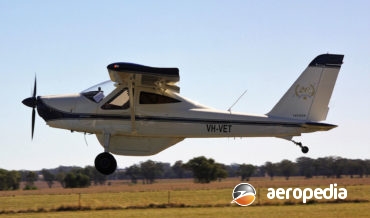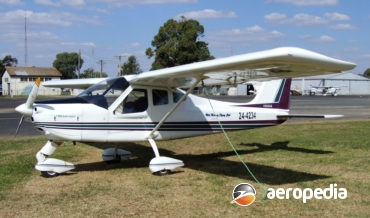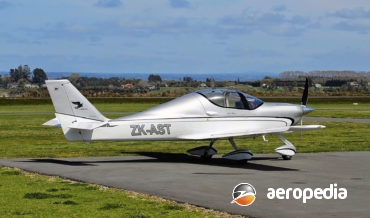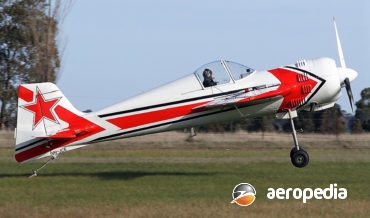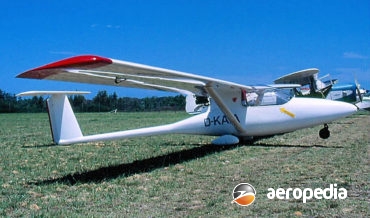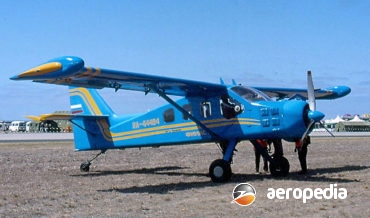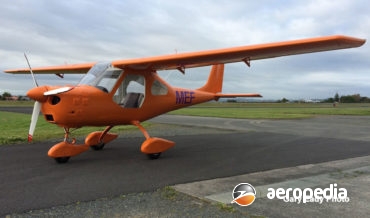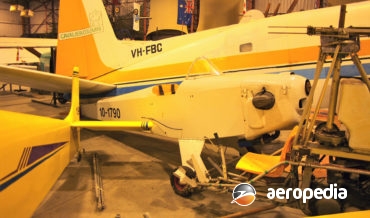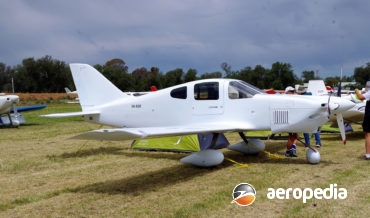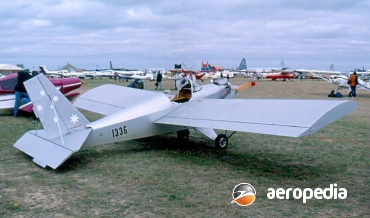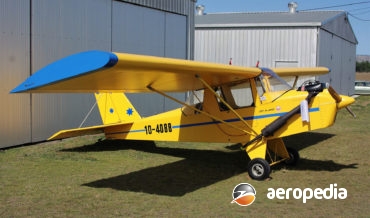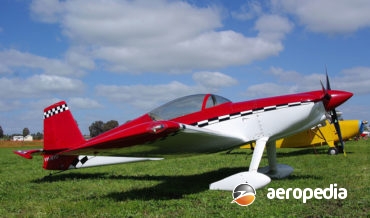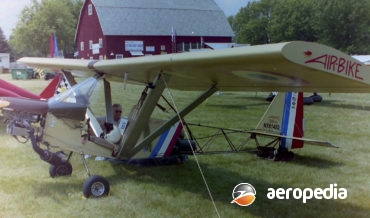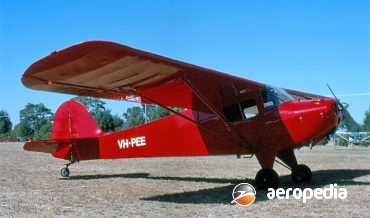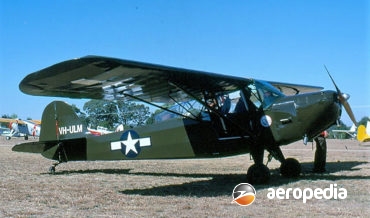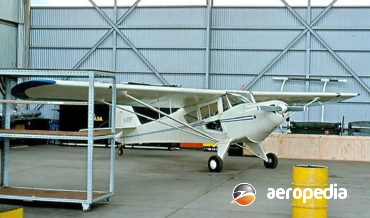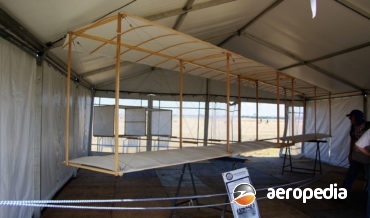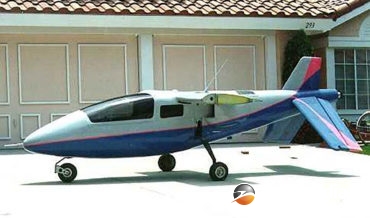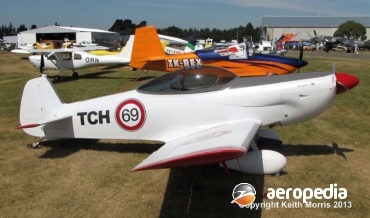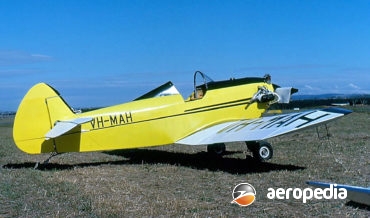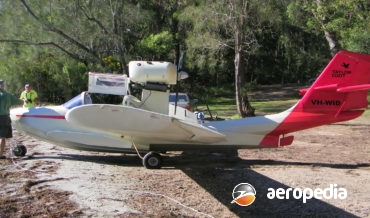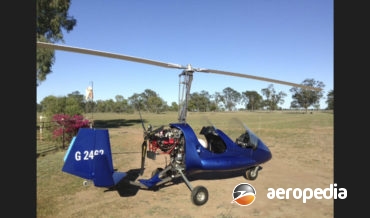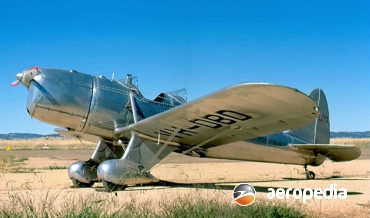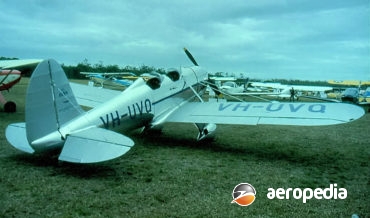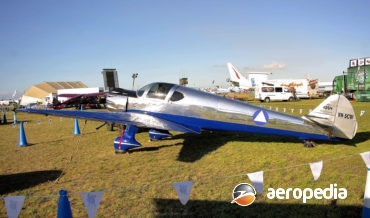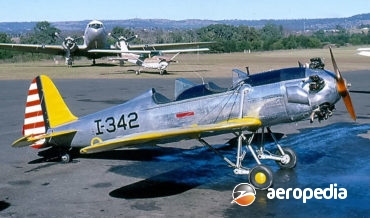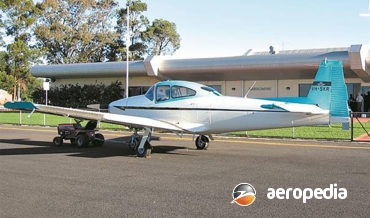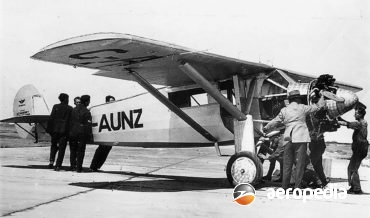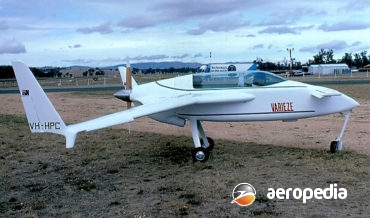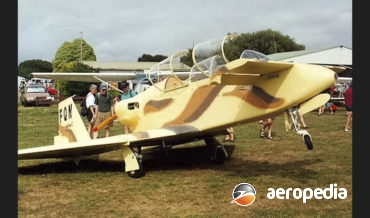All Contents
Contents
The Alpin is one of a series of gliders produced in the Czech Republic by TeST, this company being formed in 1992 with the aim of designing and producing ultralight gliders, ultralight motor gliders, and ultralight aircraft and to this end the company has been very successful.
David C. Eyre
- May 8, 2019
The Tierra was a three-axis control ultra-light aircraft produced to meet Australian ANO95.10 regulations and could be operated on land or water and was available in either single-seat or two-seat form.
David C. Eyre
- May 8, 2019
The Mono-fly was produced in the United States as a strut-braced high wing ultra-light aircraft in kit form or as an already completed ready to fly machine, having been designed by structural engineer Robert Teman and produced by Teman Aircraft Inc.
David C. Eyre
- May 8, 2019
The Tecnam P-2008 Gran Turismo (Grand Tourer) was released to the market by the manufacturers, Tecnam, in Italy in 2009. It was an all-new design combining a carbon-fibre fuselage with a metal wing and stabilator.
David C. Eyre
- May 8, 2019
The P2006T is the first entry by the Tecnam company in Italy to produce a cheap twin-engine light aircraft. Of all metal construction, it is fitted with two Rotax 912S engines, is of high wing configuration, and has a fully retractable tricycle undercarriage.
David C. Eyre
- May 8, 2019
The Bravo was a development by the Italian manufacturer of the popular series of light aircraft to meet the United States Light Sport Aircraft (LSA) class of flying machine as defined by the Federal Aviation Administration.
David C. Eyre
- May 8, 2019
The Tecnam 2002 series was introduced to the Company’s line in 2004, being described as designed and built in the 21st Century, this is the standard all GA trainers should attain.
David C. Eyre
- May 8, 2019
The RG series of aircraft produced by Tecnam was developed to meet the needs of a number of customers for variants with retractable undercarriages and two basic models have been produced, the high-wing P2000 RG and the P2002 JR-Retractable/CSU with a low wing.
David C. Eyre
- May 8, 2019
The construction of the prototype of the P-96 Golf series commenced in July 1996, the first flight being made in March 1997.
David C. Eyre
- May 8, 2019
The P-92 TailDragger was introduced to the Tecnam range in 2012 to celebrate the 20th anniversary of the P-92 series of light aircraft, with some 2,500 examples of the series having been delivered by the end of 2012, the type operating in many countries around the World.
David C. Eyre
- May 8, 2019
One of the new breed of light aircraft which can be registered under AUF or RAA regulations, or placed on the general aviation civil register, the P-92 Echo series is marketed by Costruzioni Aeronautiche Tecnam in Naples, Italy, the prototype P-92 Echo making its first flight on 14 March 1993.
David C. Eyre
- May 8, 2019
Costruzioni Aeronautiche Tecnam of Capua in Italy has for some years developed and produced a range of light aircraft for the sports pilot and a new aircraft was announced in 2013 known as the Astore (Goshawk), the prototype of which flew for the first time at Naples in June 2013,
David C. Eyre
- May 8, 2019
The SP-55M is a redesign and developed variant of the Yakovlev Yak-55 and has been built and marketed by Technoavia in Moscow and, like its predecessor, has been a popular aircraft around the world for competition in Unlimited Category competitions.
David C. Eyre
- May 8, 2019
This series of ultra-light aircraft was initially built in Switzerland as the Neukom AN-20B and AN-22 and was produced during the 1980s.
David C. Eyre
- May 8, 2019
In January 1993 the construction of two prototypes of the SM-92 Finist (a magical bird that was transformed into a Prince) commenced, the first (RA-44482) flying on 28 December 1991.
David C. Eyre
- May 8, 2019
The TechPro Merlin dates back to 2011 when the first prototype flew, the supply of kits commencing in 2015. Three variants are available, the Merlin 100UL with a tricycle undercarriage or a tailwheel, first flown in April 2012 and aimed at the Federation Aeronautique International microlight class.
David C. Eyre
- May 8, 2019
For many years Team Incorporated of Bradyville, Tennessee produced a range of ultralight aircraft for the sport aircraft market, these being produced in kit form for the amateur builder with limited finance.
David C. Eyre
- May 8, 2019
The Foxtrot 4 light high-performance sporting and touring monoplane was developed by Team Tango, a company based at Williston, Florida, and owned by Revolution Aviation Inc.
David C. Eyre
- May 8, 2019
The Mini Max is one of a range of low-cost ultra-light aircraft designed and developed by Team Inc (Tennessee Engineering & Manufacturing) of Bradyville, Tennessee, and built in large numbers for the light aircraft market.
David C. Eyre
- May 8, 2019
The Hi-MAX is one of a series of ultra-light aircraft designed to be built by amateur builders and to be registered under ultra-light regulations.
David C. Eyre
- May 8, 2019
The Team Rocket is a light high-performance kit-built monoplane produced by Team aircraft of Taylor Texas.
David C. Eyre
- May 8, 2019
The Team Airbike, also known as the Ison Airbike, was designed to meet US FAR103 regulations and has been produced in single and two-seat variants, the latter being licenced as an ultralight trainer or as an amateur-built aircraft.
David C. Eyre
- May 8, 2019
In 1936 the Taylorcraft Aviation Company was formed by C G Taylor, a former President and Chief Engineer of the Taylor Aircraft Company, to produce the Model A, a two seat light aircraft.
David C. Eyre
- May 8, 2019
The prototype of the Model 15 “Foursome” (NX36320), powered by a 112-kw (150-hp) Franklin 6A4-150-B3 engine, was flown for the first time in 1946.
David C. Eyre
- May 8, 2019
Prior to World War II Taylorcraft was known for producing two-seat in tandem basic trainers and to meet demand it developed what became known as the “Tandem Trainer”.
David C. Eyre
- May 8, 2019
The F-21B was a new production aircraft produced by a company called Taylorcraft in the USA and was a development of the Taylorcraft series of aircraft produced in the 1930’s and ‘40s.
David C. Eyre
- May 8, 2019
In the 1890s George Augustine Taylor (1872 - 1928) became interested in aviation and, with the assistance later of Lawrence Hargrave, experimented with gliders.
David C. Eyre
- May 8, 2019
The Mini-Imp was one of a number of designs developed by well-known American designer, Molt Taylor. Taylor was born in Portland, Oregon and was known for designing a number of interesting aircraft, including the XLRQ-1 amphibious assault glider, the Coot and others.
David C. Eyre
- May 8, 2019
The Taylor Titch, like the Taylor Monoplane, was designed by the late Mr John Taylor in the United Kingdom and was designed to improve on the basic design of the JT.1 but not to replace that aircraft as the aerodynamic characteristics of the two were different.
David C. Eyre
- May 8, 2019
The Taylor JT-1 monoplane was designed in the United Kingdom in the 1950s by the late John Taylor. He built the prototype with the object of producing an airframe for not more than £100 Sterling.
David C. Eyre
- May 8, 2019
Designed by Moulton B ‘Molt’ Taylor in 1969, the first of two prototypes of this series (N1070) flew for the first time in February 1971 and was known as the Coot Model A. Fitted with a 90-kw (120-hp) Franklin 225 engine, the aircraft completed 100 hours of flying before being
David C. Eyre
- May 8, 2019
The Titanium Explorer gyrocopter was designed by Neil Sheafer and built at Tamworth, NSW, he being previously the Australian importer for similar in appearance Autogyro Europe gyrocopters imported from overseas.
David C. Eyre
- May 8, 2019
In 1934 Tubal Claude Ryan created the Ryan Aeronautical Corporation in a location similar to where the old Ryan Aircraft Company had built its designs.
David C. Eyre
- May 8, 2019
The Ryan Aeronautical Company was a successor to the Ryan Company which produced the Ryan Brougham, the type used by Charles Lindbergh in his Atlantic crossing, and a few examples of which were registered in Australia in the 1930s.
David C. Eyre
- May 8, 2019
In August 1937 the Ryan Aeronautical Company rolled out a new design, the SC series being a Sport Coupe of all metal construction.
David C. Eyre
- May 8, 2019
Although looking somewhat similar to the Ryan STA/STM series of two-seat military trainers, the Ryan PT-22 was in fact an entirely different aeroplane built by the same manufacturer.
David C. Eyre
- May 8, 2019
The Navion was designed by North American Aviation as the NA-143, later the NA-145, and major production in some numbers was by Ryan Aeronautics to the extent that some 1,238 examples were constructed in the years 1948 to 1950, the latter acquiring the rights to the design in 1947.
David C. Eyre
- May 8, 2019
The Ryan Brougham series was the first real attempt by the Ryan Aircraft Corp to produce a light commercial transport, and the type became famous when a variant, known as the Ryan NYB (NX211) was used by Charles Lindberg to fly the Atlantic in May 1927 in 33 ½ hours.
David C. Eyre
- May 8, 2019
The VariEze was designed by Bert Rutan in late 1974. The first aircraft was built over a ten-week period in the spring months of 1975 in the USA, and was first flown on 21 May 1975.
David C. Eyre
- May 8, 2019
Design of the VariViggen was commenced by Elbert ‘Bert’ Rutan in 1968 and the prototype, known as the Model 27, flew for the first time in May 1972.
David C. Eyre
- May 8, 2019
Recent Comments
Archives
Categories
- No categories
Categories
- No categories
Latest Posts
Newsletter

